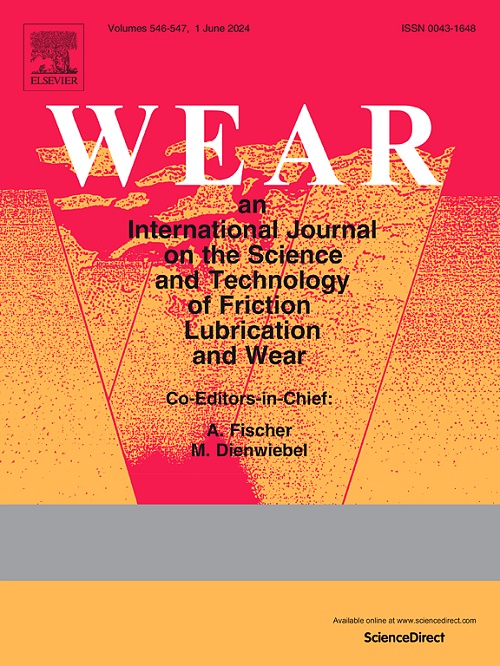Investigation on the material removal mechanism of sapphire wafer by novel green slurry in semi-fixed abrasive polishing
IF 5.3
1区 工程技术
Q1 ENGINEERING, MECHANICAL
引用次数: 0
Abstract
It is a great challenge to produce ultra-smooth surface of sapphire wafers at high material removal rate (MRR) using green slurry in semi-fixed abrasive polishing. A novel environmentally friendly polishing slurry was developed by preparing abrasives and complexing agents to improve surface quality and polishing efficiency. The SiO2 and diamond/SiO2 composite abrasives were successfully prepared by a simplified sol-gel strategy, exhibiting high purity, homogeneous particle size, and excellent dispersibility. Based on the semi-fixed polishing technology, the green polishing performance of sapphire wafers using different types of abrasives alone and in combination with complexing agents was investigated. The experimental results demonstrated that the novel slurry containing triisopropanolamine (TIPA) and diamond/SiO2 composite abrasive had superior polishing performance. Compared with the traditional diamond slurry, the surface roughness of the novel slurry was reduced by 24.4 % to 6.2 nm (Ra), while the MRR was increased by 65.4 %. Through electrochemical experiments, molecular simulations, and infrared analysis, the improved polishing performance of the composite abrasives with TIPA may be attributed to the complexation of TIPA and the optimization of interfacial contact behavior. The analysis of wear debris and polished sapphire wafer surface further pointed out that the deformation reduced the indentation depth while enhancing the reactivity of the friction chemistry. The diamond/SiO2 composite abrasives with TIPA slurry accelerated the generation and removal of the reaction layer consisting of AlOOH, Al-OH, and Al2Si2O7, realizing the optimal synergy between mechanical wear and tribochemistry, which significantly improved the polishing quality.
求助全文
约1分钟内获得全文
求助全文
来源期刊

Wear
工程技术-材料科学:综合
CiteScore
8.80
自引率
8.00%
发文量
280
审稿时长
47 days
期刊介绍:
Wear journal is dedicated to the advancement of basic and applied knowledge concerning the nature of wear of materials. Broadly, topics of interest range from development of fundamental understanding of the mechanisms of wear to innovative solutions to practical engineering problems. Authors of experimental studies are expected to comment on the repeatability of the data, and whenever possible, conduct multiple measurements under similar testing conditions. Further, Wear embraces the highest standards of professional ethics, and the detection of matching content, either in written or graphical form, from other publications by the current authors or by others, may result in rejection.
文献相关原料
公司名称
产品信息
阿拉丁
triisopropanolamine (TIPA, C9H21NO3)
阿拉丁
aminomethyl propanol (AMP, C4H11NO)
 求助内容:
求助内容: 应助结果提醒方式:
应助结果提醒方式:


